Eilidh G Clark (177 KP) rated My Name is Leon in Books
Jul 2, 2019
Leon has begun to notice things what make his mum cry: when Jake makes a lot of noise; when she hasn't got any money; when she comes back from the phone box; when Leon asks too many questions; and when she's staring at Jake, (p.12).
After Carol takes to her bed, Leon, at just nine years old, takes on the role of carer and parent. Through the eyes of this young boy, the reader watches his world fall apart, fragment by fragment.
Eventually the boys are taken into care and find solace in the home of Maureen, an experienced foster carer with a deep love for both cakes and children. Maureen is a lovable character who feels a deep affinity for Leon, even though Leon is highly suspicious of anyone in the care system, but when Jake is adopted, it is Maureen who picks up the pieces. It is perhaps her honesty rather than her role as parent that soothes Leon in his most difficult times:
'Now listen carefully because I want you to understand something and I don't say this to all the children because it's not always true but with you it's true so you have to believe it. And when you believe it you will stop grinding your teeth [...] You will be all right, Leon.' (p.55-56).
But when Maureen is taken into hospital, Leon is left with Maureen's sister Sylvia, a less motherly role model than Maureen but with a desire to please her sister none the less. Their relationship is strained and often uncomfortable, but soon enough Leon finds comfort in a new friend, Tufty. Tufty is a young man who looks after a plot in his father's allotment. The man and the boy form a friendship that grows alongside the seeds that they plant in the garden, so when they both find themselves in the midst of the Birmingham riots, they naturally come together to save each other.
This is a coming of age story unlike any other, it is not a happy ever after but hope for a child and his future.
I love this novel, it is clearly written with believable characters and honest emotions. At the start of the novel I was concerned about the character's point of view - a third person limited perspective from the child's perspective - but it is cleverly done. While the reader gathers glimpses of emotions from inside Leon's head, there is still enough distance to feel the tug of the story from the outside. It is as if the reader is holding the child's hand and experiencing his life with him as it unfolds. Brilliantly done and brilliantly written. Go Leon.

ricardo.ch
Shopping and Lifestyle
App
With the ricardo.ch app you will have the biggest Swiss online marketplace with you at all times –...
Gareth von Kallenbach (980 KP) rated The Passion of the Christ (2004) in Movies
Aug 14, 2019
The film shows the final hours of Jesus leading to his crucifixion and subsequent resurrection. The film opens with Jesus (Jim Caviezel), and some of his Disciples in the garden as Jesus contemplates what is to come and prays that this burden be passed from him if it is Gods will. Jesus is visibly afraid and is unsure of what to do, as he knows Judas has betrayed him and that troops are on the way to arrest him.
Jesus is soon arrested and is beaten and taken before the Jewish elders to be accused of heresy for teaching beliefs which contradict the locale doctrine and for encouraging others to follow his teachings.
Jesus is soon taken before the Roman consul who decides to punish not execute Jesus, as he does not believe his crimes are worthy of death. Politics soon envelope the situation as the Romans fear an uprising if the wishes of the council are not followed forcing Jesus to be ordered for crucifixion.
While I am not one to give away vital parts to a films story, I take it that the majority of readers will know at least this much of the story. The emphasis on the film is on what Jesus had to endure during the final hours of his life and the untold suffering and brutality that were put upon him for his beliefs.
Much has been made of the films intense and graphic violence and I am not going to sugar coat this. The film is very intense and very violent and on more than once occasion caused me to start tearing as the film is very emotional and it is hard to watch a person suffer especially one who many believe devoted his life for the betterment of all of us regardless of faith. I have always been one that believes that all people are entitled to their beliefs and that no group has the right to say that there way is the only way and that others are wrong for not following them.
In many ways, the film drives this point home as Jesus prays for the forgiveness of those who are killing him even though they do not share his faith. The man who was killed as a threat to the society and doctrines of the community never wavered in his love for his fellow man and retained his compassion to the very end.
Gibson is to be commended for making a powerful and emotional film that can be enjoyed by people of all faiths. The film is a visual masterpiece that is highly detailed and is the most accurate depiction of the final hours of Christ ever committed to film. The use of Latin and Aramaic in combination with subtitles underscores attention to detail that Gibson put into his labor of love and as such, he deserves praise for crafting this film regardless of your opinion on the films content. This is a bold and passionate film that attempts to tell the story in the way that it happened as accurately as possible. While some of the scenes may be very difficult to watch, you will not soon forget the images and will have a hard time not being emotionally moved by the work. This is not a film that blames any group for the death of Jesus; it is simply an account as to how and why it happened. The film also serves as a message that we should all embrace and tolerate the differences in our neighbors as when we do not, atrocities can happen. As a student of history, I found myself pondering during the film in regards to what would happen if a figure arrived today that encouraged others to follow a new path and not those of the traditional religions. If said person were to become widely know and develop a large following what would happen? Would they be called a cult and prosecuted, would they be ridiculed, or would they be killed? This troubled me as I think that despite nearly 2000 years of progress there are those who would resort to violence. Such is the case of the film. The majority did not want to see Jesus killed; it was a strong and vocal minority of the population who wanted to protect their interests. The film is not anti-Semitic and does not blame any group for the death of Jesus and emphasizes that his death was in order to absolve sin and blame.
The film makes you think and in this day of disposable films, it is nice to see that despite the controversy and lack of commercial nature of the film, Gibson put his heart into the production and created one of the best films of the decade. Gibson is a master storyteller and shows that he is a gifted director and producer and should be praised for his craft.
Ivana A. | Diary of Difference (1171 KP) rated Romanov in Books
Oct 5, 2020
The history books say I died.
They don’t know the half of it.
Ever since I read Fawkes, I knew I loved Nadine’s writing, and when Romanov was announced, I couldn’t be happier. As I have spend my childhood and young adult life in the Balkans, whilst travelling across Europe, I have always admired Russia, and always enjoyed reading all the theories about the Romanov family.
As a child I would be told stories and fairy tales, I would watch the Disney adaptation of Anastasia, and as I was growing up, I would read history books and fiction on this very subject. When I got my hands on ‘’Romanov’’, I knew I would be up for an adventure, with lots of expectations, but what I never knew was that I would be blown away of how beautiful this book is!
This book is split into two main parts, before and after the Romanov’s execution, but it is also split into the first being the historical part, and the second being the fictional part. Both parts of the book are quite intense, and very different emotions come up to surface, but they are both very powerful throughout, and fitted together quite well.
In the first part, we are introduced to the Romanov family, and how they are kept as hostages by the Bolsheviks. It would’ve been much better if we had more details on the pre-hostage period, why the revolution began, why the king abducted the throne, who are the Bolsheviks and what they believed in. The book starts in the middle of this whole situation, and whilst I knew the beginning before, I am certain a lot of people wouldn’t have.
The history, as much accurate as it was, also had a personalized feeling that the author wanted to give. I have to admit, a lot of the details, especially around the family were quite accurate. The family did stick together and loved each other, they did have secrets and they did make friends with their captors. Anastasia’s brother did indeed had hemophilia and Rasputin was allegedly helping him. However, the author decided to put her personal feelings into the history as well. The king is presented as a wonderful leader that cares about the people. I understand that we see this story from Anastasia’s point of view, and as his daughter, she is supposed to see her father as the best figure in the world. But I still believe this part should be more objective, if not from Anastasia’s point of view, then at least by the king’s actions and dialogues. The other big element that bothered me was the portrayal of Rasputin. He is shown in this book as a family helper and a kind man, when in fact, he was far from that. In the history books, he is described as a madman, a creepy person, and the king was not happy of him coming in the house. The family’s secrecy and the queen’s silent domination over the king, together with Rasputin’s doings were the start of the revolution, and I believe that it one of the required truths that this books should have included, but didn’t. And that troubled me.
On top of this, is the Russian language used throughout this book. There were a lot of spelling errors, and misinterpretations. And whilst I can understand these words, many people can’t, and translation wasn’t provided in the book. Also, I really found this quote interesting, talking about the Russian culture, and how they don’t show emotions. Just a note – this is most of the time true, people won’t be nice to strangers, but actually, Russian people are quite friendly and emotional as well.
‘’We Russians weren’t required to share any amount of emotion we didn’t want to.’’
Apart from these few things that slightly bothered me, I really enjoyed this book. Anastasia is an amazing character, and through her we can see her love towards her family, her country, and even towards the people that wish her harm. We get to see her love, cry, be hurt, be afraid, forgive, and grow throughout the book, and her journey was magical.
‘’As I lay in the grass next to the spell that could rid me of heart pain, I realized that a part of forgiveness was accepting the things someone had done – and the pain that came with that – and moving on with love. Forgiveness was a personal battle that must always be fought in my heart.’’
I loved the beginning of the book the most. The setting was well-written, and I got the feel the same way as the Romanov family did. They tried to act as if everything was normal, when in fact, they were held captive, and moved out of their home. They weren’t allowed to go out in the garden often, and when they did have this opportunity, they enjoyed every single second of it. And they all had hope every single day. They kept smiling and stayed together.
There are number of scenes that will always stay close to my heart – the relationship between Zash and Anastasia (as unrealistic as it might be), always kept me on my toes, his desperation, and his guilt, and her ability to forgive and love regardless.
The brother’s illness, and his persistence through it. His motivation and his will to never give up. The love he holds for his family, and especially his sister Anastasia, and the toughness and not letting go. A few scenes were unrealistic with him, as I hardly believe anyone suffering from hemophilia can survive all those injuries mentioned in the book and the pools of blood, but above all – this character did achieve what he was meant to do – show hope where there is none.
A wonderful and magical tale, with a history behind it of a mysterious family, especially their end – this book brought tears on my eyes and made me think about the power of forgiveness and love. A true masterpiece.
Thank you to Nadine Brandes, for letting me be a part of her Ninja Team.

Barbecue Recipes HD
Food & Drink and Lifestyle
App
The trick to making your BBQ food tasting great is using flavors that you like as well as using good...

All Islamic Audio Stories Muslims Free
Book and Lifestyle
App
Get the largest collection of free All Islamic audio stories Muslims for your phone or tablet. Read...

100 Yoga Spa Relax Music
Health & Fitness
App
100 Yoga Spa Relax Music - The Greatest Yoga,Spa,Meditation,Healing and Manifestation Collection...

Jolly Phonics Letter Sounds
Education and Entertainment
App
Thank you for all the feedback we've received. It's great to hear that the app is helping children...
Written in Harris' crime fiction style, 'Cari Mora' quickly starts with men competing to get to the rumored millions of dollars in gold that is suppose to be at the Escobar mansion. One of these men is a very memorable German character named Hans-Peter Schneider, who readers come to know as someone that is hired to kill/deliver people to rich customers, as well as selling organs on the black market: " He [Schneider] could see his reflection in the glass side of his liquid cremation machine where he was dissolving Karla, a girl who hadn't worked out for business." When Schneider meets Mora, he immediately wants to sell her to a high paying customer.
The novel's main subject is Escobar's hidden gold, but readers also get a glimpse into the underworld of human trafficking and hired thugs. Most interestingly, the story surrounds the dark past of certain characters - - - mostly Mora and Schneider- - - who also happen to be the most put-together characters in all of the novel. All other characters seem to be filler, where most of their stories either don't end or aren't explained. Such as the character Benito, when the reader gets to follow him home, there is a mere snippet about his family life that leaves us wanting more: " Lupe was waiting at Benito's house, in spirit, in the small garden she had made behind Benito's house. He felt her presence warm and close to him as fireflies winked over the white blossoms, luminous under the moon. Benito poured a glass of Flor de Cana for himself and one for her. He drank both of them sitting in the garden with Lupe, and being there together was enough. "
While the treasure hunt is going on, a man named Jesus Villarreal becomes an important character that used to be Escobar's captain- - - and who knows exactly where the gold is hidden; he has not only made a deal with Schneider, but also another drug lord named Don Ernesto- - - if he tells exactly how to get the gold, safely, his wife, son and sister-in-law must be taken care of when he is gone.
This story has twist and turns known in every great crime fiction novel: a woman who is more than what she seems, thugs with guns, dark backstories, and fast-reading action. Yet, the story contains so many characters,even new ones coming in on almost every chapter, that it could be hard for readers to keep in mind who is who, especially with not enough description to tell them apart. Another disappointment is the character named Detective Terry Robles, who had such an amazing story to tell - - - from he and his wife being shot up by druggies to Robles seeking revenge when his wife can't exactly remember who she is,let alone who he is, because of her injury - - - but his story never comes to fruition, and we never get to experience the end of it.
As great as a character Mora is, I personally believe that Schneider would have been a much more interesting view point to read from. The story would have taken on a completely different appeal if the focus had been on strictly him. For instance, one of the most intriguing parts was reading about Schneider's past which may hold the key to why he is who he is : "His parents were in the freezer and he could hear their voices through the door. They could not get out because the freezer door was secured with a chain Hans had tied in an excellent chain knot, the way his father had taught him to tie a chain, shaking the knot until the links jammed tight. "
Although I wish for a different view point, I will say again that Mora is a well-written character - - - her character just becomes flat in certain places- - - but she still makes the story worth reading. Harris did a wonderful job in showing the darker side of life, as he has always done with his Hannibal series. If anyone is a fan of the Netflix show 'Narcos,' or crime fiction surrounding drug lords, they will certainly enjoy this book from beginning to end.
Movie Metropolis (309 KP) rated The Girl on the Train (2016) in Movies
Jun 10, 2019
And Fifty Shades of Grey may have its critics (me being one of them) but at least it appealed to those of us not interested in sharing cinema screens with rambling tweens. The finest of the adult genre? Well, that has to be Gone Girl. But now there’s a new kid on the block, ready to steal its crown. Is The Girl on the Train a worthy adversary?
Alcoholic Rachel Watson (Emily Blunt) catches daily glimpses of a seemingly perfect couple, Scott (Luke Evans) and Megan (Haley Bennett), from the window of her train. One day, Watson witnesses something shocking unfold in the garden of the strangers’ home. Rachel tells the authorities what she thinks she saw after learning Megan is missing. Unable to trust her memory, the troubled woman begins her own investigation, while police suspect that Rachel may have crossed a dangerous line.
Emily Blunt has become one of Hollywood’s finest actors, constantly adding new genres to her resume. From The Devil Wears Prada to Sicario and beyond, there is nothing she won’t try and The Girl on the Train is bolstered by a career-best performance by the actress. It’s never easy to play a drunk convincingly; you can look to some UK soap operas for proof of that, but she manages to pull it off exceptionally well.
Of the supporting cast, only Justin Theroux makes a lasting impact as Rachel’s ex-husband Tom, now living with his new wife Anna – a lacklustre Rebecca Ferguson. It would be unfair to sling too much mud at a very talented group of actors, but up against Blunt, there really is no comparison.
Elsewhere, the complex narrative of Paula Hawkins’ book translates to a rather messy filming style when viewed on the big screen. Continuous flashbacks from within Rachel’s mind are handled reasonably well by director Tate Taylor (The Help) and he manages to wrench everything together to stop the plot from becoming incoherent.
Unfortunately, The Girl on the Train is a victim of its own intense marketing campaign. The trailers have given away far too much for those who haven’t read the book and whilst the twists and turns aren’t immediately obvious, some of the Cluedo-esque fun has been removed. It’s clear Dreamworks wanted the film to resemble Gone Girl as much as possible, aiming to attract a similar audience, but this may have backfired slightly.
Overall, The Girl on the Train is a particularly faithful adaptation of the novel of the same name, held up by an intense and frankly incredible performance by Emily Blunt. Unfortunately, some of the film’s suspense has been lost by a poorly executed marketing campaign and as such it becomes a passable addition to the adult thriller genre. This year’s Gone Girl it is not.
https://moviemetropolis.net/2016/10/06/a-victim-of-its-marketing-the-girl-on-the-train-review/
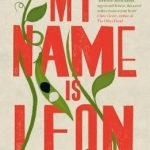
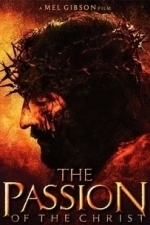
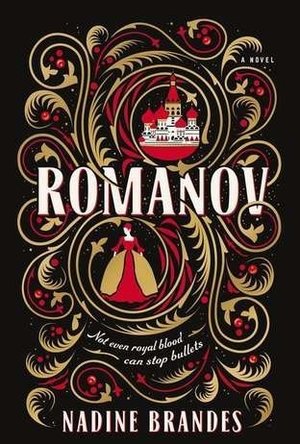
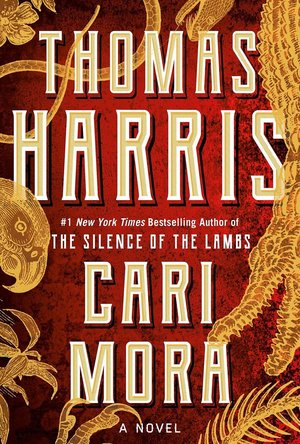
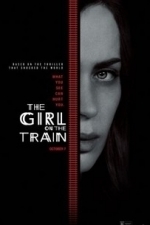
Eilidh G Clark (177 KP) Jul 2, 2019
ClareR (5879 KP) Jul 2, 2019